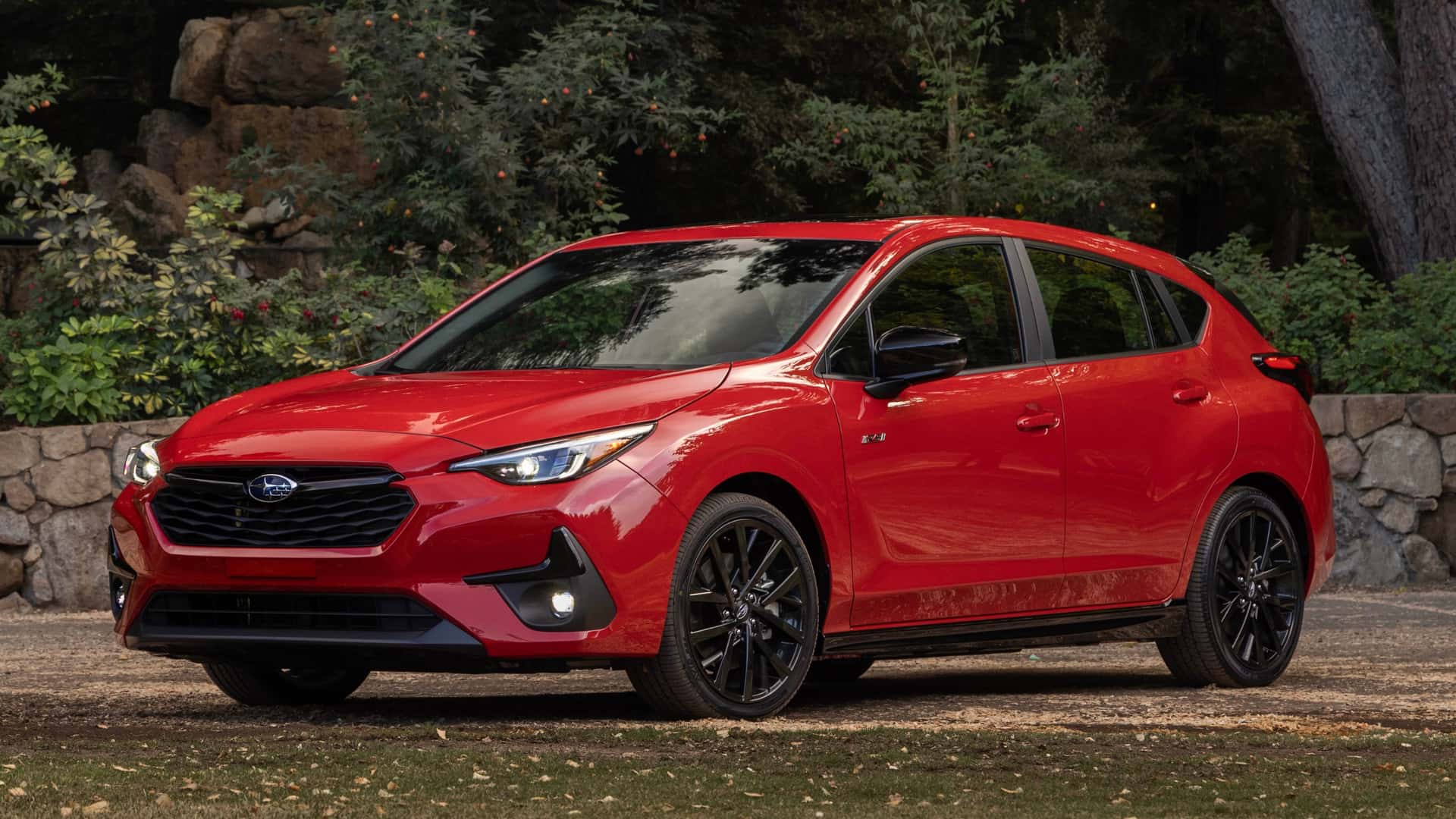The automotive world is rapidly evolving, with new technology reshaping how vehicles operate, improve safety, and enhance driver convenience.
One such innovation is the electronic parking brake (EPB), a feature that replaces the traditional mechanical handbrake or foot-operated parking brake with a button-activated electronic system.
EPBs offer several advantages, including space-saving cabin designs, automatic application in certain scenarios, and integration with advanced driver-assistance systems like hill-hold control and auto-release.
Despite these benefits, electronic parking brakes have not yet become universal. Many common vehicles, especially those in the compact, budget, or older segments, still rely on traditional mechanical parking brakes.
This means a physical handbrake lever or foot pedal that the driver must engage manually. While the mechanical system is simple, reliable, and familiar, it lacks some of the conveniences and safety enhancements provided by the electronic alternative.
For car buyers, knowing which vehicles do not have electronic parking brakes is important, especially as more drivers expect modern convenience features in their cars.
Traditional parking brakes require more driver involvement and skill to use effectively, and in some cases, may not integrate with newer safety technologies. Conversely, they often come with easier maintenance and fewer electronic components that might require costly repairs.
In this article, we will explore 10 common cars that still use mechanical parking brakes instead of electronic ones. We will look at the reasons behind this choice, the pros and cons of each system, and what drivers can expect when using these vehicles.
Whether you are shopping for your next car or simply curious about how parking brake technology varies across popular models, this article will provide a comprehensive overview.
Also Read: 10 Cars With Adjustable Headrests That Don’t Rattle
1. Toyota Corolla
The Toyota Corolla has long been one of the world’s best-selling compact cars, known for its reliability, fuel efficiency, and practicality.
Despite its modern features and strong safety ratings, the Corolla, particularly in many of its trims and recent model years, still employs a traditional mechanical parking brake rather than an electronic parking brake (EPB).
Toyota’s decision to stick with the mechanical parking brake in the Corolla can be attributed to a few reasons. Firstly, the mechanical handbrake lever is a proven, simple system that is both familiar and easy for most drivers to use.
This system requires manual engagement and disengagement, usually via a lever between the front seats, offering straightforward functionality without the need for complex electronic components. This simplicity tends to translate into fewer repair costs and less susceptibility to electronic malfunctions.
The Corolla’s mechanical parking brake, while lacking some of the modern conveniences of an EPB, is still effective at securing the vehicle when parked on various slopes and terrains. However, drivers must remember to apply the brake firmly and release it properly to avoid premature wear or unintended vehicle movement.
One downside of mechanical parking brakes is their limited integration with advanced safety technologies.
For example, electronic parking brakes often work seamlessly with hill-hold assist systems and automatic brake release functions, which can improve driving ease and safety, especially in hilly areas or stop-and-go traffic.
The Corolla may lack some of these automatic features due to its traditional system, requiring more driver attention.

Still, many Corolla owners appreciate the tactile feedback and reliability of a manual parking brake. For drivers who prefer straightforward mechanical controls without the complexity of electronics, the Corolla remains a compelling option.
Additionally, the absence of an electronic system may appeal to those who value lower maintenance costs over high-tech convenience.
In summary, the Toyota Corolla’s use of a mechanical parking brake reflects a balance of tradition, reliability, and cost-effectiveness—factors that continue to resonate with many compact car buyers.
2. Honda Civic
The Honda Civic, a perennial favorite in the compact car segment, is known for its sporty design, fuel efficiency, and well-rounded feature set.
While newer trims and premium versions of the Civic have begun introducing electronic parking brakes, many common trims of the Civic still rely on a traditional mechanical handbrake system.
Like the Toyota Corolla, the Honda Civic’s mechanical parking brake operates via a lever located between the front seats, requiring the driver to manually engage and disengage it. This system is straightforward and reliable, with a long history of effective service in various driving conditions.
One advantage of the mechanical parking brake is its simplicity. Unlike electronic systems, which rely on motors, sensors, and control modules, the mechanical brake is purely mechanical.
This means fewer electronic components that could fail or require expensive repairs. For buyers concerned with maintenance costs and long-term reliability, the manual parking brake can be appealing.
However, mechanical parking brakes have some limitations compared to electronic ones. They generally don’t integrate with hill-start assist systems, which prevent rollback on inclines.
Nor do they offer automatic engagement or release, which can be convenient in urban driving. Drivers must also be mindful to fully apply the brake when parking on slopes and fully release it before driving to avoid damage.
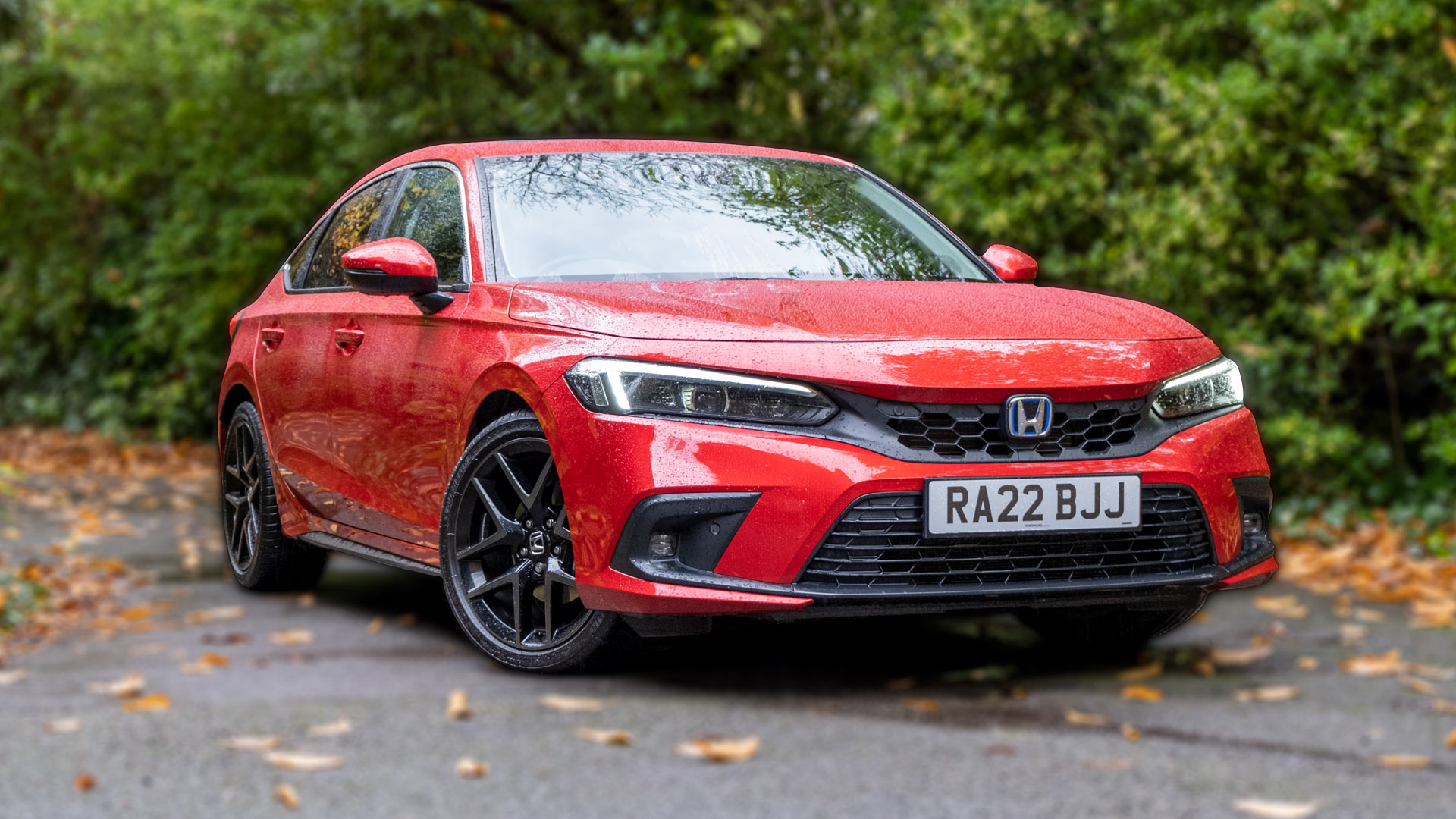
Despite these drawbacks, many drivers appreciate the tactile feedback and control provided by a mechanical handbrake. It allows for precise modulation, which can be useful in certain driving scenarios such as hill starts or when securing the vehicle on uneven ground.
Honda has been gradually introducing electronic parking brakes in higher-end Civic trims and newer generations, reflecting the industry trend. Still, for many buyers seeking value and simplicity, the mechanical parking brake remains a common feature in the Civic lineup.
In essence, the Honda Civic’s continued use of a mechanical parking brake underscores the balance between trusted mechanical reliability and the gradual adoption of modern technology.
3. Ford Focus
The Ford Focus has been a popular compact car in many markets, known for its balanced driving dynamics, affordability, and a variety of available trims.
While recent models of the Focus in some regions have started offering electronic parking brakes, many common versions, especially older or base trims, still utilize a traditional mechanical parking brake system.
The mechanical parking brake in the Focus typically consists of a hand-operated lever located between the front seats. This lever mechanically engages the rear brakes via cables, preventing the vehicle from rolling when parked.
The system’s simplicity ensures straightforward operation, allowing drivers to physically feel when the brake is engaged, which many drivers find reassuring.
One of the benefits of the mechanical parking brake is its lower complexity, resulting in fewer potential electronic failures.
This makes maintenance simpler and generally less expensive compared to electronic systems, which may involve motors, sensors, and control units that can fail or require recalibration.
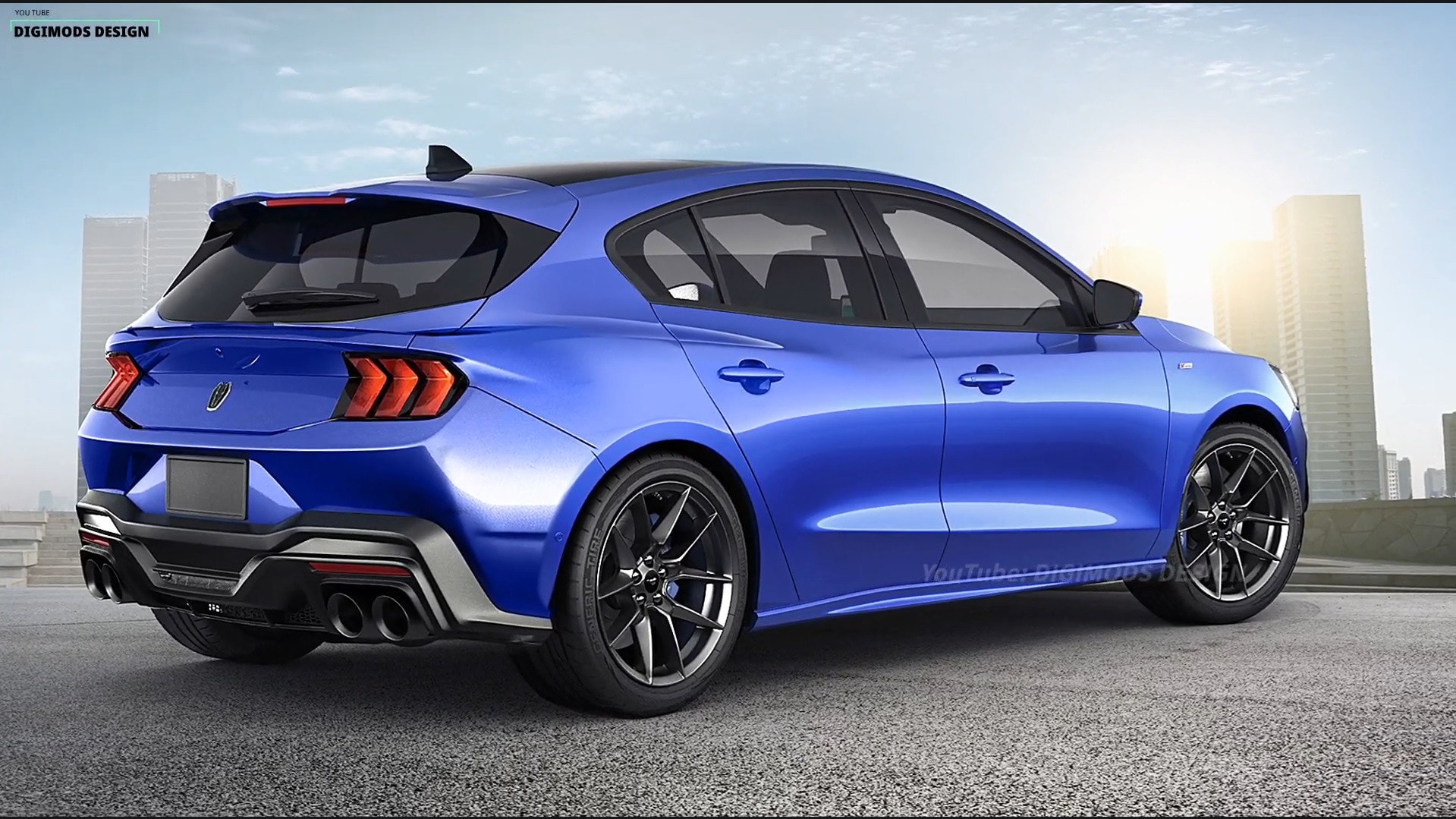
However, mechanical parking brakes lack some of the convenience and safety integrations of electronic systems.
For instance, they do not typically integrate with hill-start assist, which can help prevent rollback on inclines, nor do they offer automatic release when the driver begins moving, which is common in EPB-equipped vehicles.
This means drivers need to be mindful of properly engaging and disengaging the brake to avoid vehicle damage or unintended movement.
Ford’s gradual transition to electronic parking brakes in newer models shows the brand’s acknowledgment of modern convenience trends, but many Focus drivers still experience the benefits and drawbacks of the mechanical system.
For those who prefer tactile feedback and manual control, the Focus’s mechanical handbrake remains a solid choice.
In summary, the Ford Focus provides a reliable and familiar mechanical parking brake experience for drivers who value simplicity and cost-effective maintenance, even as the automotive industry increasingly shifts toward electronic systems.
4. Nissan Sentra
The Nissan Sentra has been a staple in the compact sedan segment for decades, valued for its practicality, comfort, and affordability.
While Nissan has embraced various advanced technologies in recent Sentra models, many versions, particularly lower trims, continue to rely on a mechanical parking brake instead of an electronic one.
The Sentra’s mechanical parking brake is typically engaged via a hand lever situated between the driver and front passenger seats. This cable-operated system physically locks the rear brakes, ensuring the vehicle remains stationary when parked.
The manual system offers drivers direct feedback and control over the brake engagement, which many appreciate for its simplicity and reliability. One advantage of the mechanical system is its ease of maintenance.
Without the need for electronic components such as motors or sensors, repairs are usually more straightforward and less costly. This can be especially appealing for budget-conscious buyers or those who prefer vehicles with fewer electronic parts.
However, mechanical parking brakes lack the integration benefits offered by electronic systems. Features like hill-start assist and automatic brake release are either absent or less refined, requiring drivers to be more attentive during parking maneuvers.
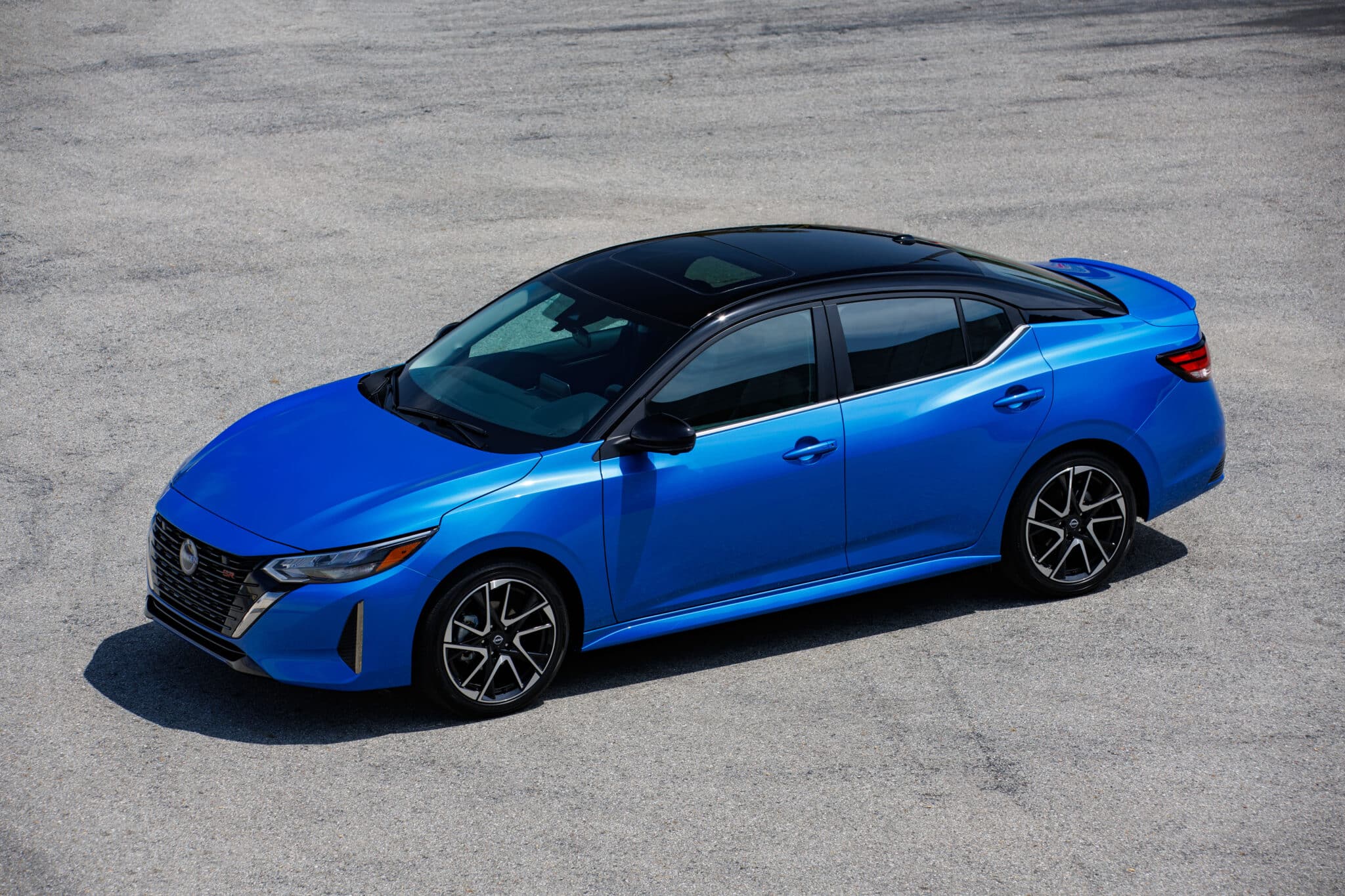
Additionally, the manual engagement means the driver must remember to apply the brake firmly and release it fully to prevent brake wear or unintended movement.
Nissan has started introducing electronic parking brakes in some higher trims or newer Sentra models, reflecting a shift towards modern convenience and safety standards.
Yet, the mechanical parking brake remains common in many trims, especially in markets where cost considerations and simplicity take priority.
For many Sentra owners, the mechanical parking brake represents a balance between trusted functionality and affordability.
Drivers who prioritize ease of maintenance and manual control may find this system preferable, while those seeking the latest technological convenience might opt for trims or models with electronic brakes.
The Nissan Sentra’s continued use of a mechanical parking brake in many variants underscores its appeal to practical buyers and highlights the ongoing transition in automotive technology.
5. Chevrolet Cruze
The Chevrolet Cruze has been a popular compact sedan and hatchback, known for its comfortable ride, user-friendly technology, and value pricing.
Despite several technological upgrades over its production years, many models of the Cruze, especially in earlier or base trims, are still equipped with a traditional mechanical parking brake rather than an electronic parking brake.
The mechanical parking brake system in the Cruze is typically a hand-operated lever located between the front seats. This lever mechanically actuates cables connected to the rear brakes to hold the vehicle stationary.
This system has the advantages of being straightforward to operate and easy to repair or replace compared to the more complex electronic alternatives.
One notable benefit of the mechanical parking brake is its reliability. With fewer electronic components, there is a reduced chance of system malfunctions or failures.
Additionally, drivers often appreciate the tactile feedback, which allows them to feel when the parking brake is fully engaged. This physical feedback can sometimes offer a greater sense of control compared to a simple button press.
However, the mechanical system lacks some of the advanced convenience and safety features that electronic parking brakes provide.
For example, electronic parking brakes often come integrated with hill-start assist, preventing rollback on inclines, and can automatically disengage when the driver begins to accelerate.
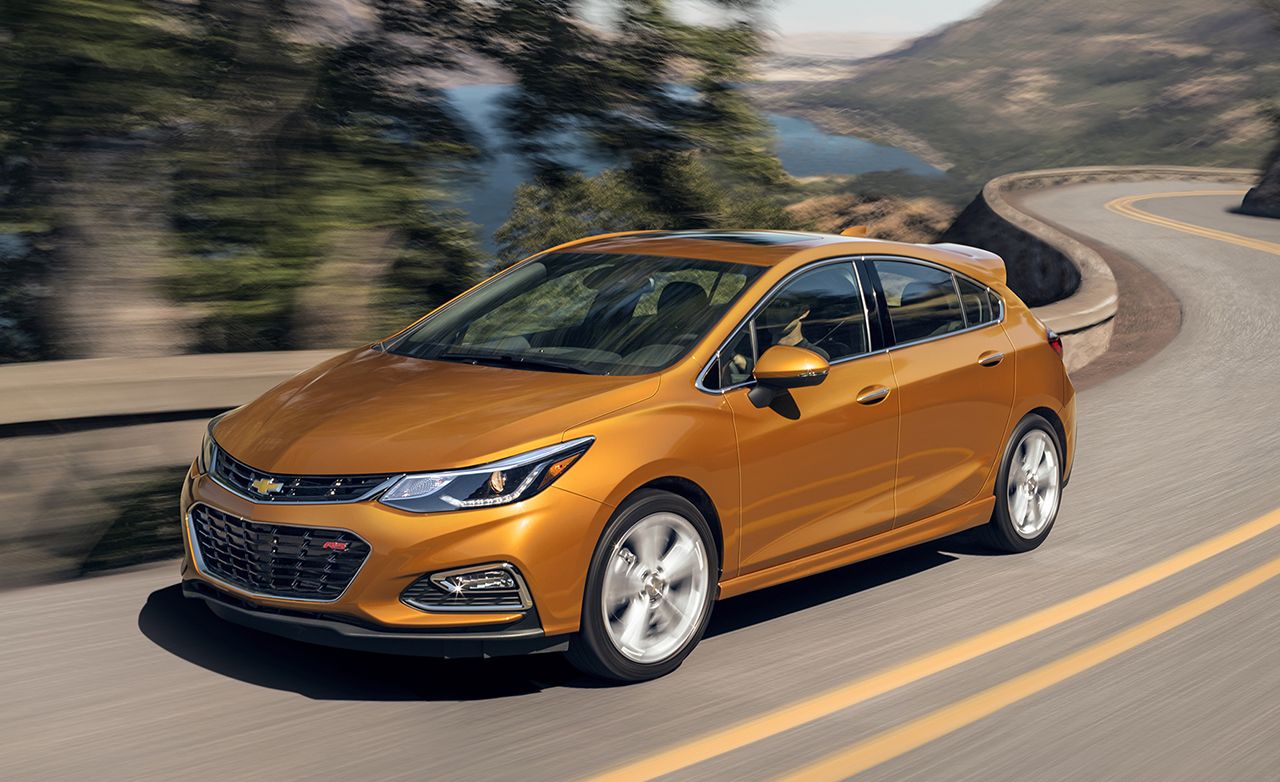
The mechanical system requires the driver to manually engage and release the brake every time, which can be less convenient in stop-and-go traffic or hilly conditions.
Furthermore, while mechanical parking brakes are durable, improper use—such as failing to fully release the brake before driving—can lead to brake wear or other mechanical issues. Drivers need to develop the habit of fully releasing the parking brake to avoid such problems.
In conclusion, the Chevrolet Cruze offers a dependable mechanical parking brake system that aligns with its value-driven positioning.
While it may lack the modern convenience features of an electronic system, the mechanical brake appeals to drivers who prefer simplicity, lower maintenance costs, and direct control.
6. Subaru Impreza
The Subaru Impreza is well-regarded for its standard all-wheel drive, safety features, and balanced performance.
While Subaru has incorporated many modern technologies into the Impreza, several trims and model years still come equipped with a mechanical parking brake instead of an electronic one.
The Impreza’s mechanical parking brake typically features a hand lever between the front seats, operating via cables connected to the rear brakes.
This tried-and-true system allows the driver to manually apply and release the parking brake, offering tactile feedback that some drivers find reassuring.
One advantage of the mechanical parking brake in the Impreza is its robustness and straightforward design. Without the need for electronic sensors or actuators, the system is less prone to electrical issues and can often be serviced or repaired at a lower cost.
This simplicity can be particularly beneficial for drivers in regions with harsh weather conditions, where mechanical components might be easier to maintain.
However, the mechanical system lacks several conveniences of an electronic parking brake. For example, electronic parking brakes can engage automatically when the vehicle is parked and disengage when the accelerator is pressed, reducing driver workload.
Additionally, they often integrate with hill-start assist to prevent rollback on inclines, something that mechanical systems may not handle as seamlessly.

Despite these missing features, the mechanical parking brake in the Impreza remains effective and reliable.
Drivers accustomed to manual operation appreciate the direct control it provides. However, it requires careful use—drivers must ensure the brake is fully released before driving to avoid brake drag or damage.
Subaru has begun integrating electronic parking brakes in newer or higher-trim Impreza models, reflecting a gradual move towards modern convenience. Nonetheless, many buyers continue to appreciate the mechanical system for its proven reliability and cost-effectiveness.
In summary, the Subaru Impreza balances traditional mechanical systems with modern vehicle technology, making it a practical choice for those who value reliability and control over high-tech features.
7. Kia Forte
The Kia Forte has gained popularity for its modern styling, fuel efficiency, and competitive pricing. Despite many advanced features offered in recent years, a significant number of Forte trims still come equipped with a traditional mechanical parking brake instead of an electronic parking brake.
The mechanical parking brake in the Forte is typically a hand lever located between the driver and front passenger seats.
This cable-actuated system physically locks the rear brakes when engaged, preventing the vehicle from moving when parked. The system’s simplicity makes it highly reliable and easy to repair compared to electronic alternatives.
One benefit of this mechanical setup is that it provides direct tactile feedback to the driver, which many find reassuring. Drivers can feel the engagement level, helping to ensure the parking brake is fully applied.
Additionally, with fewer electronic components involved, the system is less prone to malfunctions or costly repairs.
However, mechanical parking brakes lack some of the convenience features found in electronic parking brakes.
For instance, electronic systems can integrate with hill-start assist to prevent rollback and may automatically disengage when the driver accelerates, enhancing ease of use.
The manual parking brake requires the driver to remember to fully apply and release it, which can sometimes be less convenient in stop-and-go situations or hilly environments.
From a maintenance perspective, the mechanical system is generally easier and less costly to maintain. It doesn’t require software updates or electronic diagnostics, which can be a plus for budget-conscious owners.
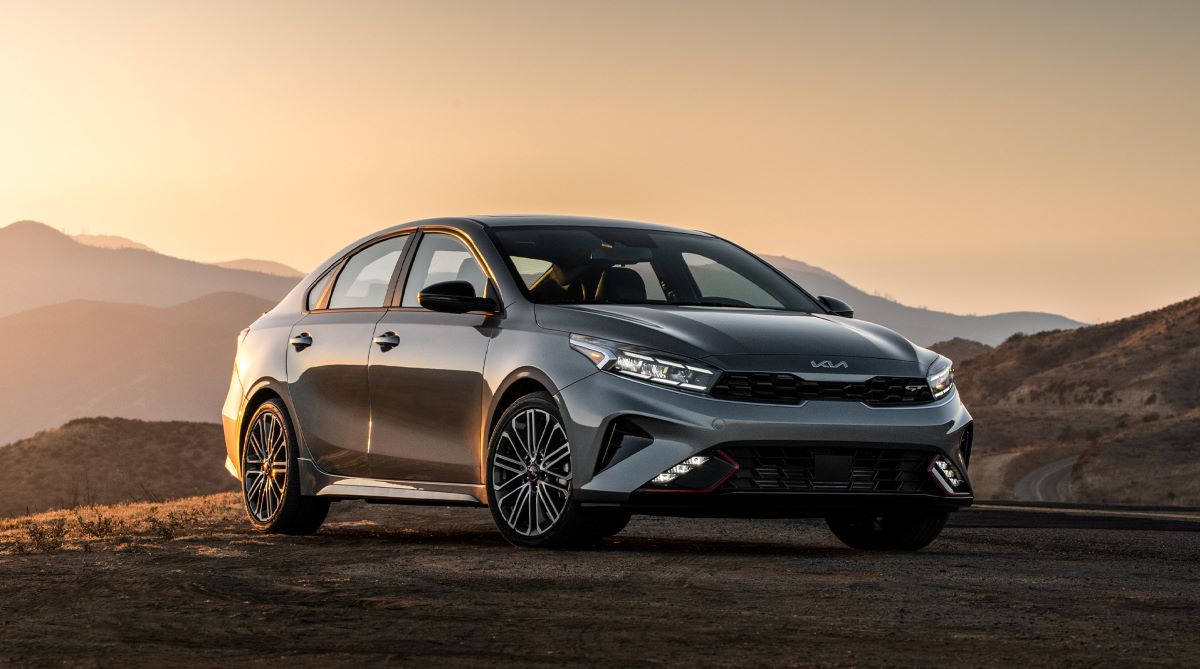
While Kia has been gradually introducing electronic parking brakes in higher trims and newer models, the Forte continues to offer the mechanical parking brake in many variants. For drivers who prefer straightforward, proven technology with low maintenance costs, this system remains attractive.
In conclusion, the Kia Forte’s mechanical parking brake aligns with the car’s reputation as a practical and affordable compact sedan, appealing to those who value simplicity and reliability over cutting-edge convenience features.
8. Hyundai Elantra
The Hyundai Elantra is a well-regarded compact sedan known for its stylish design, extensive features, and strong warranty coverage.
While Hyundai has made strides in incorporating electronic parking brakes in some newer or higher-end Elantra trims, many models still feature the traditional mechanical parking brake system.
In most Elantras without an electronic parking brake, a hand-operated lever between the front seats engages the parking brake via cables that lock the rear wheels. This mechanical system is straightforward, providing direct driver control and a physical feel when the brake is engaged.
One advantage of the mechanical parking brake is its simplicity and durability. It has fewer components that can malfunction electronically, reducing maintenance costs and complexities. The direct feedback helps drivers confirm that the parking brake is fully engaged.
On the downside, mechanical parking brakes lack the automatic features of electronic systems. Electronic parking brakes often integrate with hill-start assist, automatically holding the car on an incline without driver input.
They can also disengage automatically when the driver starts to accelerate, which can be a convenience during urban stop-and-go driving.
For Elantra owners, the mechanical parking brake requires active driver attention. Forgetting to release the brake before driving or not engaging it properly can lead to premature wear or unsafe situations. Nevertheless, many drivers appreciate the reliability and straightforward nature of the mechanical system.
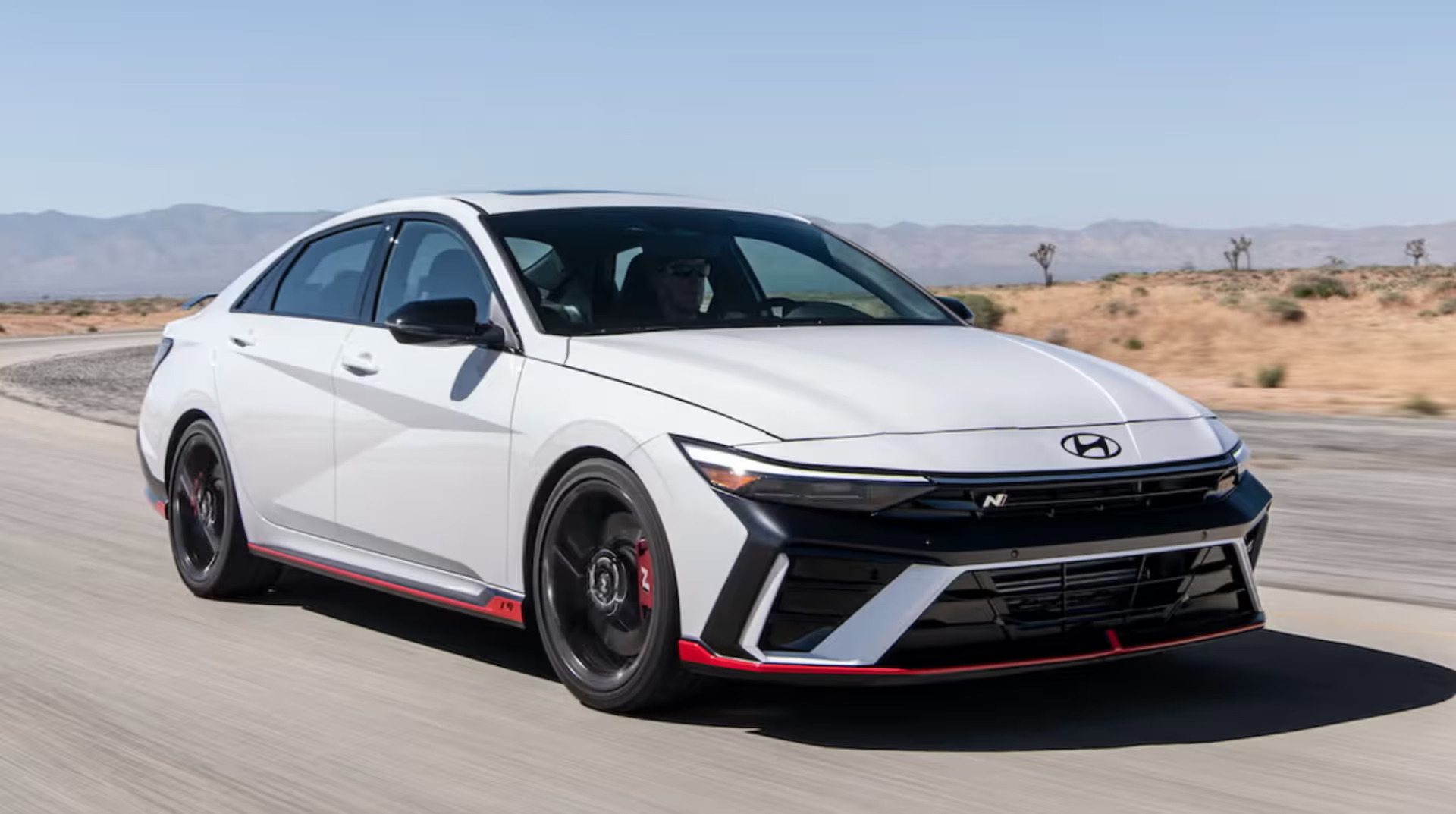
Hyundai continues to roll out electronic parking brakes in higher trims and newer generations of the Elantra, reflecting a broader industry trend toward automation and convenience. However, the manual parking brake remains common, especially in base models, where cost-effectiveness and reliability are prioritized.
In summary, the Hyundai Elantra’s mechanical parking brake offers a dependable, low-maintenance option for drivers who prefer a traditional approach to parking brake control without sacrificing essential safety.
9. Volkswagen Jetta
The Volkswagen Jetta is a well-known compact sedan, appreciated for its refined European styling, solid build quality, and comfortable ride.
Although Volkswagen has incorporated electronic parking brakes in many of its newer models, a significant portion of Jetta trims, especially base models, still rely on a traditional mechanical parking brake.
The mechanical parking brake in the Jetta is typically a hand lever positioned between the driver and front passenger seats. This cable-operated system physically engages the rear brakes when the lever is pulled, securing the vehicle when parked.
The system’s simplicity ensures durability and ease of repair, avoiding potential electronic glitches that can come with more complex systems.
One key advantage of the mechanical parking brake is its direct tactile feedback, which many drivers find reassuring. This feedback helps ensure the brake is fully engaged, especially important when parking on steep inclines. Additionally, maintenance is generally less expensive due to the fewer electronic parts involved.
On the downside, the mechanical system lacks integration with features like hill-start assist and automatic brake release, which are common in vehicles equipped with electronic parking brakes. Drivers need to remember to manually engage and disengage the brake each time, which can be less convenient during city driving or on hills.
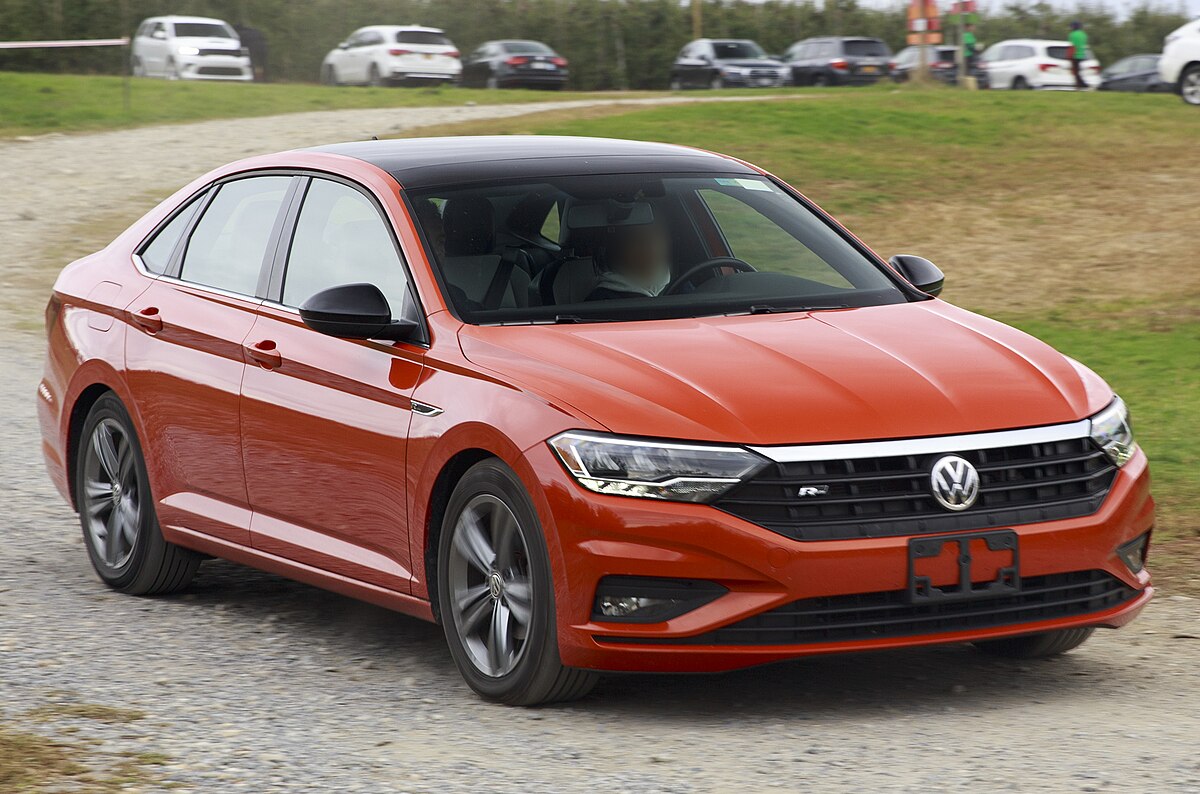
Volkswagen has been gradually moving toward electronic parking brakes in newer models and higher trims of the Jetta, reflecting industry trends. However, the manual parking brake remains standard on many trims, particularly where affordability and simplicity are prioritized.
In summary, the Volkswagen Jetta’s mechanical parking brake system offers a reliable, cost-effective solution for drivers who prefer straightforward operation and easier maintenance, even if it lacks some modern conveniences.
10. Mazda3
The Mazda3 has earned praise for its sporty handling, upscale interior, and eye-catching design. While Mazda has introduced electronic parking brakes in some newer and premium trims, many Mazda3 models, particularly in base or older versions, still come with a mechanical parking brake system.
The Mazda3’s mechanical parking brake operates via a hand lever located between the front seats. This lever physically actuates the rear brakes through cables, holding the vehicle in place when parked.
This design is simple, time-tested, and offers drivers tactile feedback confirming the brake’s engagement. A significant benefit of the mechanical parking brake is its robustness and ease of maintenance.
Unlike electronic systems, it has no motors or sensors prone to failure, making it a cost-effective option for many drivers. The direct control also appeals to those who prefer a manual feel when securing their vehicle.
However, this system lacks some conveniences of electronic parking brakes, such as automatic engagement or release, and integration with hill-start assist functions. Drivers must manually apply and release the brake, requiring attention to avoid vehicle roll or brake wear.
Mazda has been slowly introducing electronic parking brakes in higher trims and newer Mazda3 models, responding to consumer demand for convenience and safety technology. Still, the mechanical parking brake remains prevalent, especially in trims that focus on affordability and traditional control.
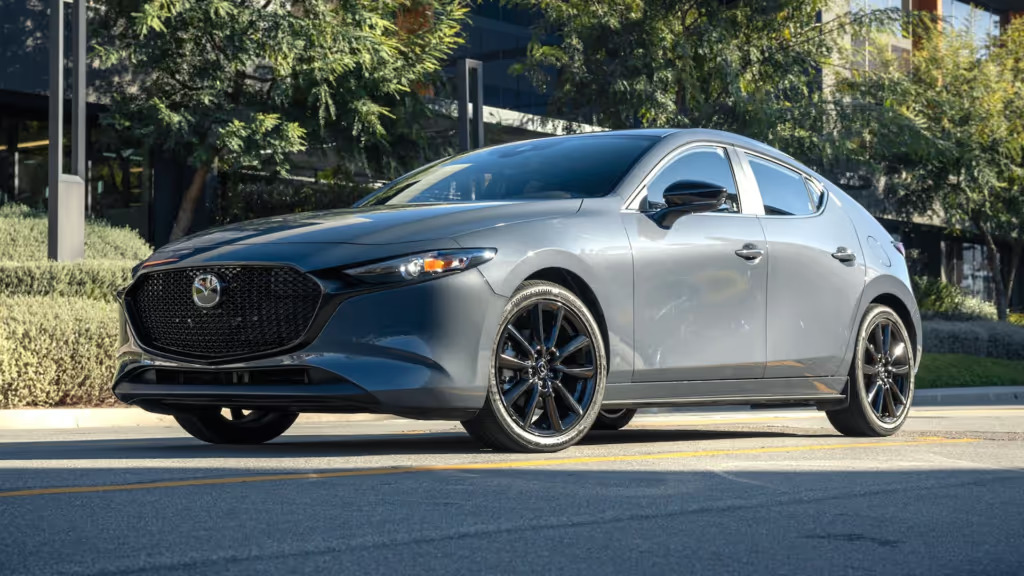
In conclusion, the Mazda3’s mechanical parking brake offers reliability and straightforward functionality, making it an appealing choice for drivers who value simplicity and control over advanced electronic features.
In today’s rapidly evolving automotive landscape, electronic parking brakes (EPBs) are increasingly becoming a standard feature across many vehicle segments.
EPBs bring several advantages such as space-saving cabin design, automatic engagement and release, integration with advanced safety systems like hill-start assist, and improved overall convenience.
However, despite these benefits, a notable number of common compact cars still rely on traditional mechanical parking brakes. This choice reflects a balance of reliability, cost-effectiveness, and driver preference.
Throughout this article, we explored 10 popular compact cars — including the Toyota Corolla, Honda Civic, Ford Focus, Nissan Sentra, Chevrolet Cruze, Subaru Impreza, Kia Forte, Hyundai Elantra, Volkswagen Jetta, and Mazda3 — that continue to offer mechanical parking brakes in many trims or model years.
Each of these vehicles showcases why mechanical systems remain relevant despite the growing presence of electronic alternatives.
One of the primary reasons for the continued use of mechanical parking brakes is their simplicity and durability. Mechanical brakes consist mainly of cables and levers, which are less prone to electronic failure and typically require less specialized maintenance.
For many drivers, especially those who prioritize low maintenance costs and straightforward vehicle mechanics, the mechanical parking brake offers peace of mind.
Unlike EPBs, which depend on sensors, motors, and control modules, mechanical systems are more robust against failures that could lead to expensive repairs or unexpected malfunctions.
Additionally, mechanical parking brakes provide tactile feedback that some drivers prefer. The physical feel of pulling a lever and the audible click associated with its engagement deliver clear cues that the brake is applied. This can be reassuring in ensuring the vehicle is securely parked, particularly on steep inclines or challenging terrains.
However, the traditional system does have limitations. Mechanical parking brakes do not integrate easily with modern driver-assistance features like hill-start assist or automatic brake release, which are increasingly common in newer cars.
Drivers must manually engage and disengage the brake, which requires attention and care to avoid brake wear or vehicle movement. In urban driving conditions or hilly environments, this can be less convenient compared to the “set and forget” nature of electronic parking brakes.
The gradual transition toward electronic parking brakes in the automotive industry indicates the growing demand for convenience and enhanced safety.
Automakers are progressively equipping higher trims and newer models with EPBs that simplify parking and reduce driver workload.
Yet, many affordable or base trims maintain the mechanical parking brake to keep costs competitive and appeal to drivers who prefer proven mechanical systems.
For consumers, understanding whether a vehicle features a mechanical or electronic parking brake is essential when making a purchasing decision.
Those seeking cutting-edge technology and seamless integration with advanced safety systems may gravitate towards models with EPBs. Meanwhile, drivers valuing simplicity, reliability, and lower maintenance costs might find mechanical parking brakes more suitable.
In conclusion, mechanical parking brakes remain a staple in many common compact cars due to their durability, ease of maintenance, and driver familiarity.
While electronic parking brakes offer undeniable convenience and integration with modern technology, the mechanical system’s continued presence in popular models underscores its enduring value.
Whether choosing a vehicle with a mechanical or electronic parking brake, drivers should weigh the benefits and trade-offs based on their preferences, driving conditions, and budget considerations.
Also Read: 10 Cars That Let You Install 3 Car Seats Across Safely

